Smileys from characters small. Japanese emoticons of Koomodisi ヾ (\u003d `ω'\u003d) ノ" (¯ (エ) ¯) v ((●●) -)
If you say short, then Koomodi is the Japanese version of the usual emoticons (). Fundamental difference It concludes that Koomodi does not need to turn over to recognize emotions. Moreover, they can express not only facial expressions or gestures, but also complex actionsAnd then and entire stories. Of course, the eastern emoticons are involved in the subject of anime and manga. And for their writing, Japanese hieroglyphs are used in the margins with punctuation marks and a variety of characters.
Where to find Koomodi
A simple search for the word "Koomodi" will issue a flow of the result. Similar situation and inquiry kaomoji.. Hundreds of thematic sites are milked with thousands of all kinds of face, the meaning of which is often impossible to determine. Therefore, beginners strongly recommend to familiarize themselves with the general spirit of Koomodi, the fragmentation of the transference is the most common of them. And it will help you in this Kaomoji.ru - a Russian-speaking site with Japanese emoticons.
Here, KoomoMi is divided into categories, for example, you can easily find cheerful emoticons, emoticons and seek, as well as pigs, weapons or love. Moreover, each of the categories describes the principles of the structure of Komomodis. For example, Koomodi friendship often use symbols similar to the hands and their touch (人, メ, 八, 爻). After reading this basis, you will become much easier to navigate among all these snacks, and they (not without fantasy) will turn out images with meaning.
If you own basic English, you can look at the progenic pages. For example, dongerlist.com has a good quality, a nice view and a good structure.
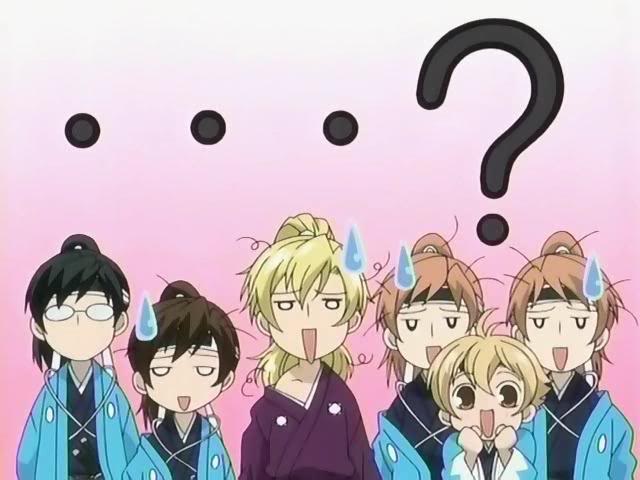
The favorable difference of the site is the ability to copy the emoticon to the clipboard in one click, and then insert it into the correspondence.
How to quickly use cameoomodis
Are you ready to kill relationships (▰˘◡˘▰) to surprise the originality of your virtual interlocutors? Excellent! With the exception of one point: to recruit complex emoticons - so-so pleasure. Let's figure out how to make it easier for life when writing Koomodi.
Chrome.
Do not think about Chrome there is no native or who would simplify the Kawaii structure. And here third-party developers Above the needs of the people and wrote a couple of advanced extensions.
For example, one of the resources mentioned by us offers to add a floating window to the browser with rapid access To Koomodi. There is a division into categories and the ability to quickly insert the emoticon in the correspondence window with one press of the mouse key.
A slightly other approach was implemented by the owners of the site disapprovallook.com, the next bank of Emotikonov. Their extension quickly redirects the user to the resource itself, where you can deal with the face with a conventional copy-paste. Why all this, if there are bookmarks? So somewhat easier, because you do not need to keep the bookmarks panel before your eyes or open a new page.
Android
Who would doubt that in Google Play. There will be a screwdriver for lovers of emoticons. It is difficult to say which of the keyboards is the best, but as an example will offer Emoticon Keyboard. She has a considerable amount of downloads, a good rating and mostly positive feedback.
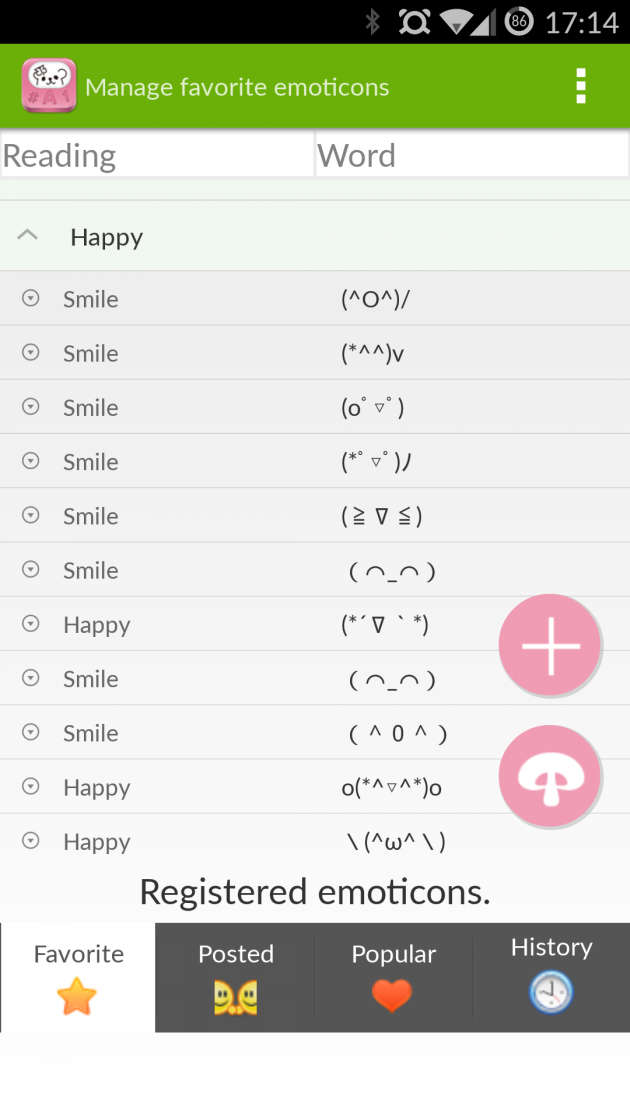
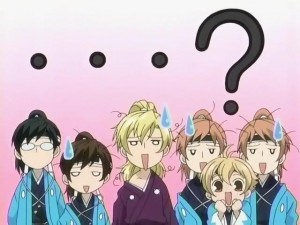

By and large, this is the most common keyboard, but with the addition of a button that calls the emoticon selection menu.
However, you hardly want to change the keyboard already. In this situation, we will give advice: look in the settings of your regular keyboard and find something similar to the user dictionary there. Here you will have to worry and ask for a replacement for certain words on Koomodi. The work is not faster and pleasant, but forever.
iOS.
The autumn blessing of Tim Cook in 2014 unleashed the hands of IOS developers who wish to create their perfect. As a result, ITunes was replenished with a number of interesting decisions, among which there were no doubt there were cameo-keyboard.

Kaomoji Keyboard boasts thousands of emoticons, such a proposal will satisfy any demand.
Mac OS and Windows
As for Mac, the settings of the Apple's desktop Operations are provided by the auto transmission of the word or phrase to the option you specified, that is, in our case - emoticon. It is a pity that something similar is missing in Windows, so you have to install and use an excess software. For example, the PUNTO SWITCHER templates are implemented in the popular Punto Switcher.
Conclusion
We hope that you are pleased to get acquainted with the unusual world of KomomoDji, but give a promise that you will not be abused both in your personal correspondence and in the comments of Lifehaker!
I was looking for smiles for the site, smiles, though pop, found. Along the way, I discovered Japanese emoticons - Komomoji. Those. It turned out that it happened, I used some of them before, but I didn't know anything before their origin and accessories.
Koomoji. — text smiles transmitting emotions through a face painted in the face, first appeared in 1986 in computing network ASCII-NET (service of the Japanese company ASCII).
Usually such smiles were created in a similar (* _ *) format. The asterisks served as the eyes, in the center - the mouth, most often it was a sign underscore, but on the edges of the face - brackets.
Various emotions, such as (") (-_-) ("), were depicted by changing the eyes of the smile, for example, sadness could be expressed by "crying eyes" with the letter "T", crying smile: (T_T).
Similar Smile T_T could be used in the meaning "not impressed." It was possible to make an emphasis on my eyes using an element ^^. Stress could be depicted so (x_x), and nervousness so (-_-;), the point of the comma symbolized the sweating from the nervous voltage. Repetition of the element /// could depict redness from shame.
Symbols of dash and point could replace an underline; The point was often used to impart the Milosity of the mouth or to designate the nose (^. ^). Although the nose or mouth could be absent at all (^^). Brackets are often replaced figure brackets (^ _ ^). In a variety of cases, the brackets are lowered at all: ^^,\u003e.< , o_O, O.O, e_e, e.e . Двойные » и одинарные ‘ кавычки добавляли, чтобы выразить страх или стыд, подобным образом во многих используется капля пота.

Japanese Microsoft IME Starting with version 2000 supports 2 types of smiles after switching on Microsoft IME SPOKEN LANGUAGE / EMOTION DIFTIONARY. In IME 2007, this feature was transferred to Emoticons Dictionary.
Further variations of Komomodis can be obtained by combining special symbols and hieroglyphs / letters of various alphabets.
Koomomodi in the west
English-speaking anime-forums adapted Japanese smiles for use with ASCII standard (symbols available for input from Western keyboards). Therefore, in the English-language part of the Internet they are often called "anime-haired smiles". They also got a big distribution in online games, chat rooms and other not anime forums. Such smiles as
<(^.^)>, <(^_^<), <(o_o<), <(-‘.’-)>, <(‘.’-^) или (>'; ..;')\u003e, which consist of brackets, mouth, nose and hands (especially hands using characters less< и больше >), often, for the external similarity,
call "Kirby", named Hero of the Nintendo video game series.
(C) Nintendo 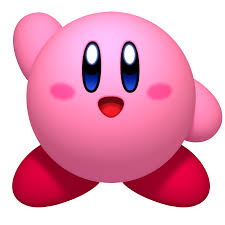 do not confuse
do not confuse 
Brackets are sometimes lowered, and the mouth-underscore is extended, to enhance emotions (for example ^ _________ ^ means very happy). And this smile t (-_- T) is made in Japanese style, but has the western meaning of "showing medium finger" (often called "bird"), the letter "T" is used to designate, hands, brushes and fingers. One of the new smiles *, .., * or `; ..; 'is used for the image of a vampire or other mythical canopy creature.
Mixing Western and Japanese Style
The use of both, Western and Japanese, styles for communication in blogs, chat rooms, forums, etc., got the name of Emodi. This mixture of Western and Japanese pop crops, gave rise to the rotated side of text smiles. As in English-speaking smiles, braces began to go out, only numbers, alphabet symbols, the most common signs of punctuation are used. Emphas such as o -, -3-, -w -, '_',; _;, t _t,:\u003e, I.V. Used to express mixed feelings that are difficult to convey standard smiles. Often adds symbols to emoji, for the image of the sweat drops in anime-style, for example ^ _ ^ 'or!\u003e ______<@>;; o; o; as well as * u *. Equality Sign \u003d Can be used can be used for image closed eyes and eye in anime-style., for example: \u003d 0 \u003d, \u003d 3 \u003d, \u003d w \u003d, \u003d a \u003d and \u003d 7 \u003d. There are many smiles like\u003e o<; где точка с запятой используется для изображения капли пота, буква «о» вместо рта, а знаки больше > and less< для обозначения стресса или легкого замешательства. Число смайлов которое можно создать подобным образом бесконечно и каждый будет иметь свое значение, например >D,\u003e \u003d d,\u003e p,\u003e: p,\u003e 3 or\u003e: 3.
Two-channel style
In the codings of the Japanese language are usually used two-bed symbolic codes. Thereby there is a huge variety of symbols suitable for use in smiles, many of which is missing in ASCII.
Most of Koomodi contain cyrillic letters, as well as the letters of other, foreign Japanese, alphabets, in order to create more and more complex expressionscomparable in difficulty with ASCII-art
.
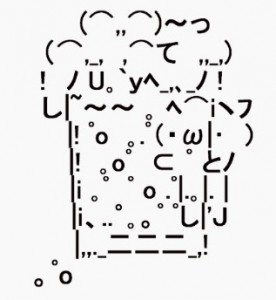
In order to gain such ages, the entry editor is required equipped with Komomoji dictionary. The user simply picks up a Japanese word that represents the desired smile, the editor immediately converts the word into complexe cameo.

Commodic composite components are called SHIFT JIS-art (SHIFT JIS is one of the codings of the Japanese language). Using a two-channel Jouzers style developed great amount Koomodisi with the help of symbols of little-known languages, such as Kannada (Dravidian language common in Southwestern India): ಠ _ಠ (means disagreement, disbelief and confusion). Soon they were picked up by the Forum Web Forum (4Chan), and then spread through other Western sites. Some of them later gained different meaning.
Several examples of complex and not very como-domes:
Hello
(● '· · ·) ノ ☆☆☆ Hello ☆☆☆☆ ヽ (· ω · `○)
Congratulations!
~~ -V (\u003d ¯ ω¯) .. O ○ お ..o ○ め ..o ○ で ..o ○ と ..o ○ う
Bye Bye
ε ('', _ c ') zβy ☆ βyё (' C _, '`) s ゛
Goodnight
オ ┌ | · O · | ┘ ヤ └ | · o · | ┐ ス ┌ | ·. · | ┐ ミ └ | · _ · | ┘
Long time no see
(ノ^^)乂(^^)ノオヒサオヒサ(ノ^^)八(^^)ノ
Nice to meet you
(*’-‘*)ノはじめましてヽ(*’-‘*)
Hooray! I'm at home!
ヾ (O '▽` O) ノ゙゚ +. ゚ タダイマー ゚ +. ゚
Smiles
^ω^
▼ω▼
